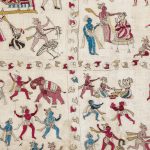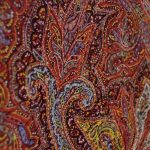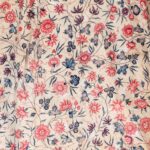A partnership between Gawthorpe Textiles Collection and Dr Rohini Arora to give an in depth look at two rare and precious examples of embroidery from the Chamba region of India.
View moreThe four Tapestries situated in the Drawing Room of Astley Hall date from the mid-17th Century and depict the mythological story of Jason and his quest for the Golden Fleece. They were made in Flanders (Northern part of Belgium) and according to the records of the Victoria and Albert Museum there are only two other […]
View moreThis beautiful textile is an example of an amli shawl, a technique where small woven pieces are hand sewn together and then further embellished with embroidery. Every step of the making process was labour intensive and required high skill levels meaning that amli shawls were highly prized luxury items. Unlike many other styles of shawl […]
View moreUnlike menswear, women’s clothing in the 18th century did not have ‘built in’ pockets and the modern handbag was yet to be invented. Instead, most women wore pockets like these on a tape around the waist, usually over the top of a petticoat but underneath the outer layer of the skirt. Slits could be left […]
View moreThis yellow brocaded silk was probably intended for use as garment fabric – perhaps as a woman’s gown or a man’s coat or waistcoat. The silk has a damask weave creating a self-coloured background pattern overlaid with vibrant, colourful floral sprays that have been added with additional brocade weaving. The brocade is further enhanced with […]
View moreA skirt or petticoat made from smooth cotton calico and lined throughout with a soft and coarsely woven cotton. The overall floral pattern is hand block printed and dyed using madder and indigo dyes with simple yet effective use of colour shading and layering to give a variety of colour tones using just a few […]
View moreA Chamba rumal of cotton muslin embroidered in colourful silk threads with a design depicting four figures on horseback and floral borders. Chamba rumal embroideries take the first part of their name from the small town of Chamba in the Himachal Pradesh region of India and began being produced there in the 17th century. The […]
View more












